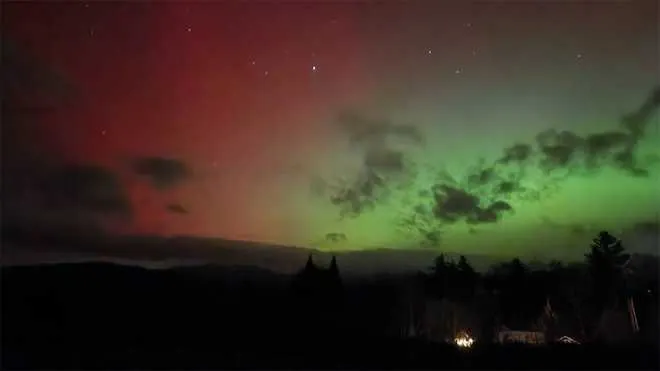
Strong Solar Activity May Bring More Auroras to Idaho
BOISE, ID — Residents across Idaho may get another opportunity to witness the northern lights as a powerful geomagnetic storm continues to impact Earth this week.
A G4-level geomagnetic storm watch remains in effect for Wednesday, November 13, following a series of coronal mass ejections (CMEs) — eruptions of solar particles and magnetic fields — from the sun in recent days. These solar events can create vivid aurora borealis displays visible across northern U.S. states, including much of Idaho.
Auroras Light Up the Night Sky Across the Gem State
On Tuesday night, Idahoans reported spectacular sightings of the northern lights from cities and towns including Boise, Nampa, White Bird, Pine, and as far as Teton Valley. Stunning photos flooded social media, showcasing vibrant streaks of green and purple across dark rural skies.
Although the northern lights were most visible Tuesday, the National Oceanic and Atmospheric Administration (NOAA) has advised that more activity could occur Wednesday night due to lingering solar effects.
What Are the Northern Lights?
Aurora borealis is caused by solar particles colliding with Earth’s upper atmosphere, triggering reactions with oxygen and nitrogen atoms. The result is a colorful light show, often green but occasionally red, blue, or purple, depending on the atmospheric gases involved.
NASA describes auroras as a product of “space weather,” an interaction between the sun’s magnetic field and Earth’s.
Where and When to Watch in Idaho
According to NOAA’s Space Weather Prediction Center, the best chance to view the aurora is during the late evening to early morning hours, typically between 10 p.m. and 2 a.m. local time.
Those living in northern Idaho or away from urban light pollution will have the best viewing conditions. For ideal results:
- Face north.
- Travel to a dark, open area.
- Check the weather forecast for cloud cover.
- Avoid light sources such as streetlamps or vehicle headlights.
- Use a smartphone camera for enhanced visibility — it may capture colors not visible to the naked eye.
Rare G4 Storm Watch Issued
G4-level (severe) geomagnetic storm watches are uncommon. According to NOAA, only four such alerts have been issued during the current solar cycle. While these storms can cause temporary issues for navigation and communications systems, they also increase the chances of widespread auroral displays.
Real-time aurora forecasts and activity updates can be found at NOAA’s Space Weather Prediction Center, or through popular aurora-watching apps.
Related Coverage
- Idaho News – https://idahonews.co/idaho-news-3/


